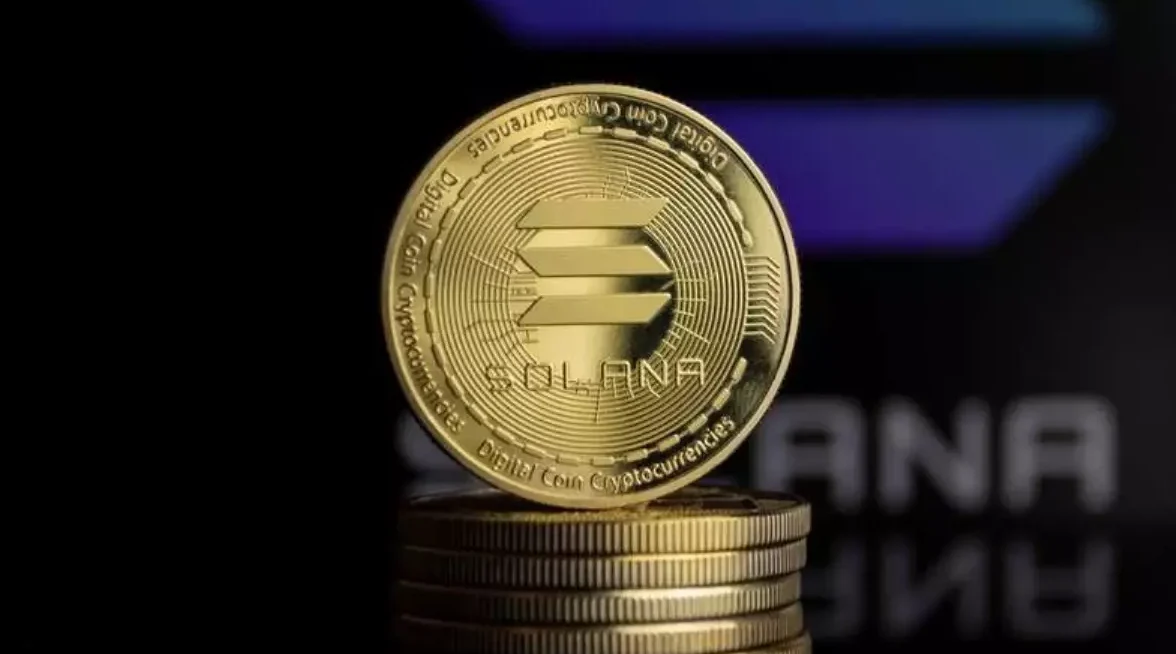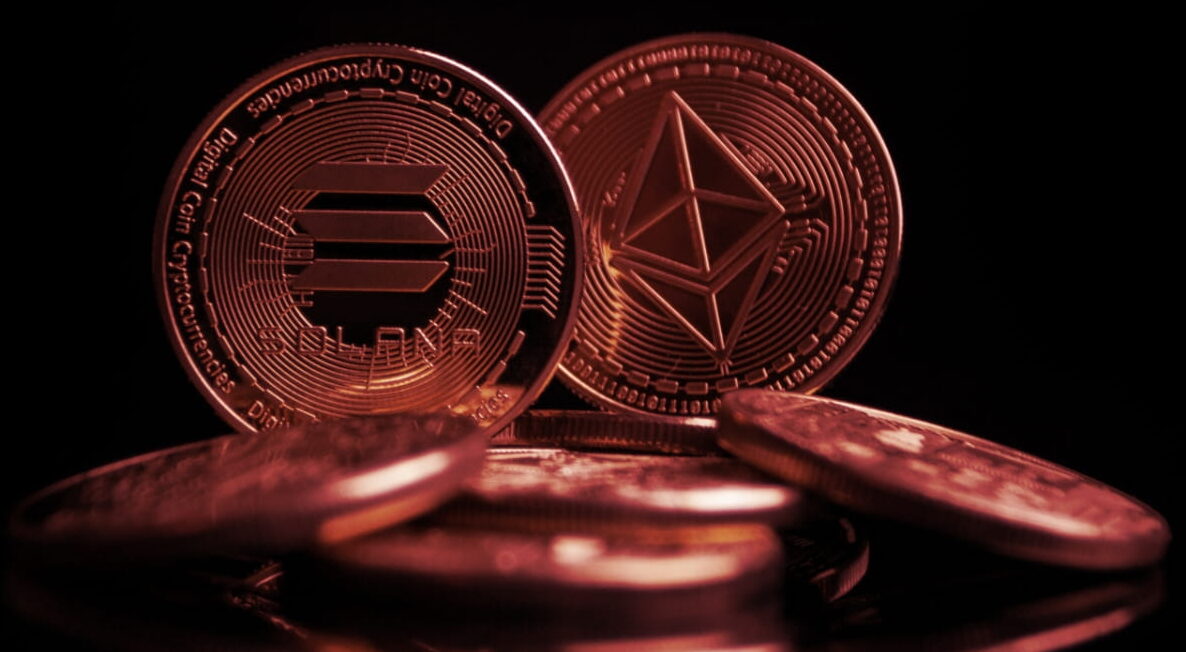Cathie Wood Solana Wood, the founder and CEO of ARK Invest, is well-known for identifying technological disruptors early on. Her support is significant in the financial world, as she has made early investments in Tesla, Square, and Roku. When someone claims to be very confident in a particular cryptocurrency and predicts that it will rise by more than 6,000%, investors, analysts, and blockchain enthusiasts all take note.
Wood has recently highlighted Solana (SOL) as a potential breakout contender among the growing number of digital assets vying for dominance in the ecosystem. She doesn’t think that way because of hype or guesswork. Instead, it is based on data-driven research, the basics of technology, and the asset’s position in the long-term future of decentralized infrastructure.
Solana’s Speed and Web3 Potential
Solana is a robust, innovative contract platform that offers advantages over other networks, particularly Ethereum. Its defining features—very high transaction throughput and extremely low fees—make it a suitable foundation for decentralized applications (dApps), non-fungible tokens (NFTs), and financial protocols. Solana is unique because it utilizes both Proof-of-History (PoH) and Proof-of-Stake (PoS) to achieve speeds that no other blockchain can match, processing over 65,000 transactions per second.
 Cathie Wood’s faith in Solana’s potential aligns with ARK Invest’s broader investment idea: technology that makes things far more efficient may eventually transform entire industries. Solana is a strong candidate for a central position in Web3 and next-generation finance, as it can handle real-time, low-cost, and scalable applications. Ethereum’s high traffic and gas expenses have prompted developers and users to explore alternative options. Solana has welcomed them with a smooth experience and strong support for developers.
Cathie Wood’s faith in Solana’s potential aligns with ARK Invest’s broader investment idea: technology that makes things far more efficient may eventually transform entire industries. Solana is a strong candidate for a central position in Web3 and next-generation finance, as it can handle real-time, low-cost, and scalable applications. Ethereum’s high traffic and gas expenses have prompted developers and users to explore alternative options. Solana has welcomed them with a smooth experience and strong support for developers.
Solana Ecosystem Growth Attracts Innovation
The rapid growth of Solana’s ecosystem is one of the best signs that it will be a long-term success. The Solana Foundation says that the number of active developers is steadily rising. Many of them are transitioning from Ethereum to Solana or beginning their blockchain journey there because it is easier to get started and operates more efficiently. The chain is now home to DeFi protocols, NFT marketplaces, and even decentralized games. Many large projects, such as Helium, a decentralized wireless network, shifted their work to Layer 1 on Solana. Render Network, which offers distributed GPU rendering, has also chosen Solana as its main blockchain. These migrations demonstrate that many people trust the network to manage real-world, large-scale applications.
Cathie Wood’s team also discusses how Solana may serve as the backbone for emerging technologies, including the integration of AI, tokenized assets, and decentralized storage. All of these things might grow more quickly on a platform geared for speed and composability.
Institutional Confidence Fuels Solana Growth
Institutional interest is a key factor in the journey of any Cryptocurrency Market toward widespread adoption. Big investment organizations and asset managers are paying attention to Solana. CoinShares, a company that manages digital assets, stated that Solana-linked financial products have been attracting more capital every week. This shows that institutional investors are becoming more confident.
Increasingly, people are speculating that Solana ETFs could become available in a similar manner to Bitcoin and Ethereum-based funds, which are now available or are being considered by regulators in certain jurisdictions. If these ETFs receive the green light, they will enable retirement accounts and institutional portfolios to invest passively on a large scale. The fact that venture capitalists are investing in the Solana ecosystem makes it even more appealing. Andreessen Horowitz (a16z), Alameda Research, and Jump Crypto are just a few of the notable investors in Solana projects. This shows that the chain is a center of innovation.
Solana Faces Challenges, Builds Resilience
Every new technology must address problems as it evolves, and Solana is no exception. People were concerned about reliability due to past network disruptions. People who disliked the blockchain were eager to label it as unstable. However, the development team has made significant progress by releasing updates that focus on enhancing validator coordination and transaction processing.
In U.S. policy circles, there is still considerable debate about whether SOL should be classified as a commodity or a security. The Securities and Exchange Commission (SEC) has gone after a number of cryptocurrencies, but Solana has so far been able to avoid major lawsuits. The Financial Innovation and Technology for the 21st Century Act and other future cryptocurrency laws could have a significant impact on Solana’s adoption curve and value. Cathie Wood isn’t worried about the uncertainty of regulations. She says that the path to big changes is typically blocked by early resistance. Her team keeps an eye on changes in legislation while putting more effort into projects that have the potential to be disruptive in the long run.
Solana Emerges as Ethereum Alternative
Ethereum remains the most popular platform for smart contracts, but Solana is gaining popularity as an alternative due to its faster and cheaper processing capabilities. The Electric Capital Developer Report states that Solana has the second-largest developer community, after Ethereum, indicating significant support.

Solana’s monolithic architecture facilitates easy and smooth development, unlike Ethereum, which requires Layer 2 solutions to scale. This makes things easier for both users and developers, which is crucial for attracting a large user base. Tools like Phantom Wallet, Metaplex, and the Solana Mobile Stack are helping to build an ecosystem that is both powerful and user-friendly. Solana is quickly coming up in terms of user experience. With the launch of Solana Pay, retailers now have a smooth, crypto-native payment option that competes with Visa in terms of transaction speed and cost-effectiveness.
Final thoughts
It may sound wild to expect a 6,220% increase, ybutit has happened before In their early years, both Bitcoin and Ethereum experienced comparable growth. Cathie Wood’s team uses addressable market size, adoption rate, and technology edge to make these kinds of predictions. If Solana keeps becoming better as the preferred Layer 1 blockchain for apps that run on the internet, this kind of return might happen over the course of several years.
The growth of tokenized assets, decentralized finance, and Web3 economies is a trillion-dollar chance. Solana is a significant infrastructure layer due to its exceptional performance and rapid adoption. Wood thinks that Solana might become the unifying layer of the decentralized web, much like Amazon Web Services has become the invisible engine of the internet.


